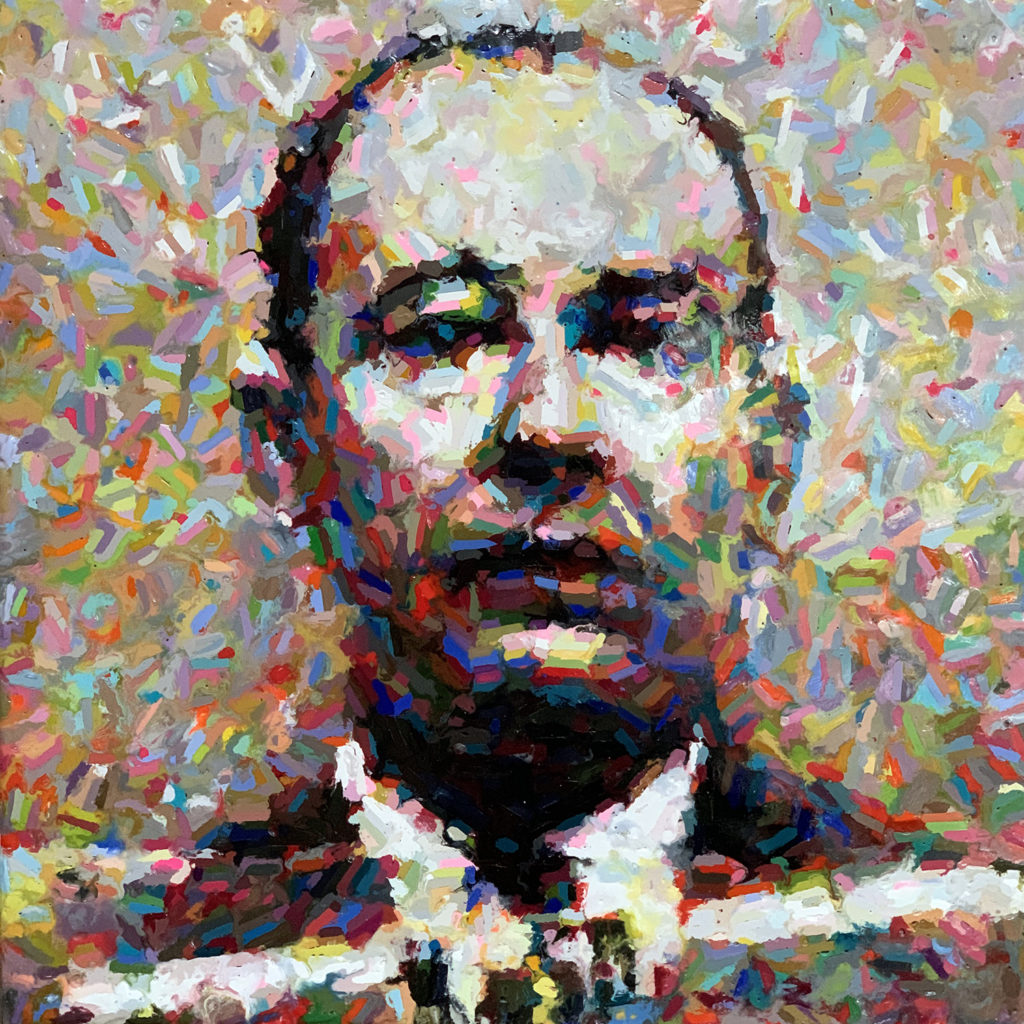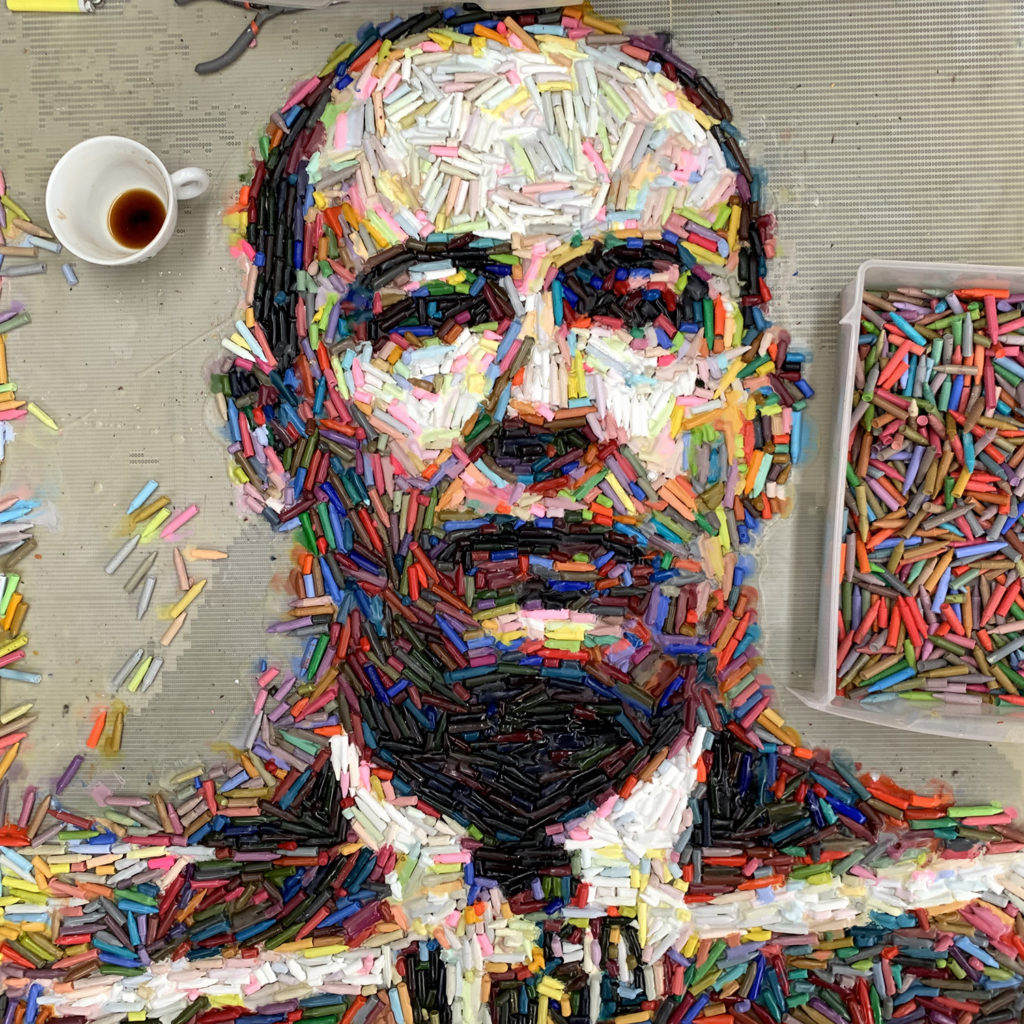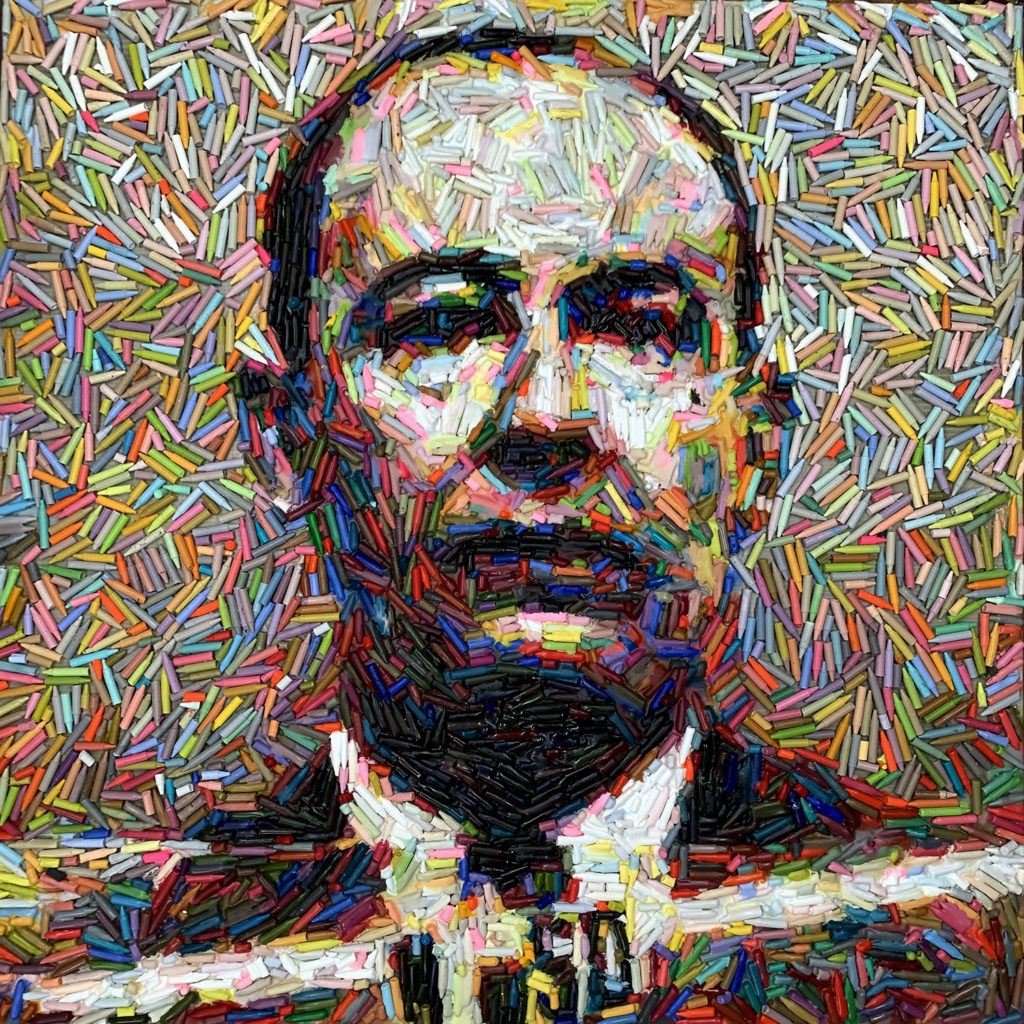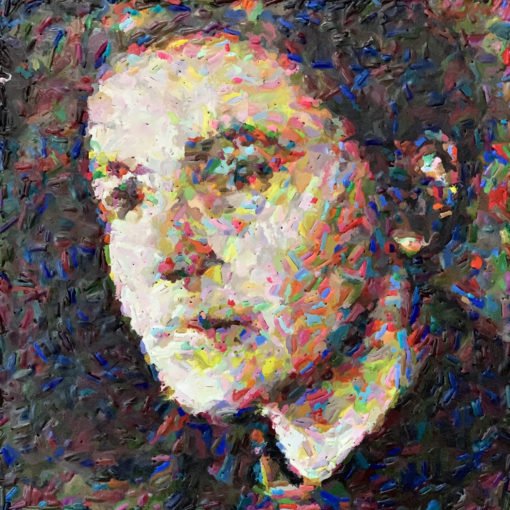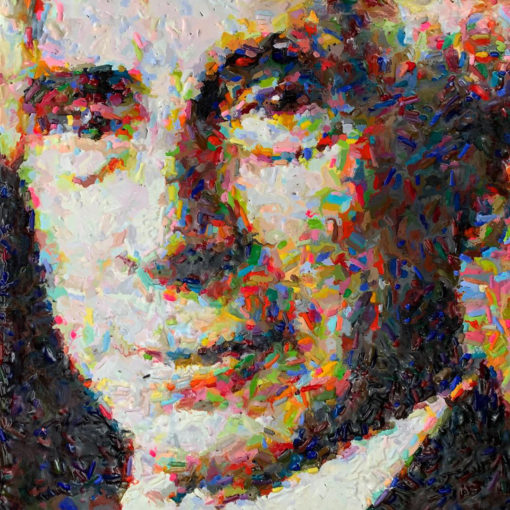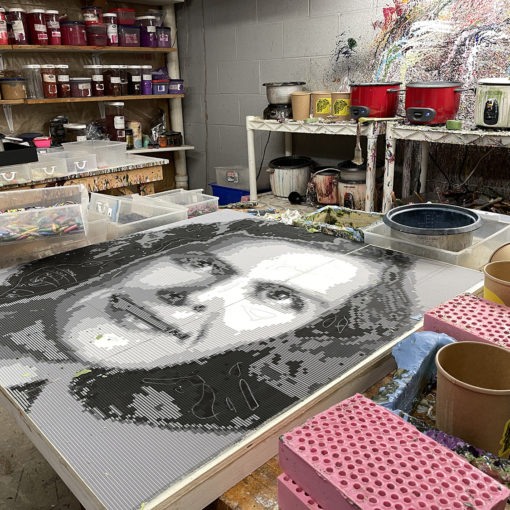John von Neumann Mathematician Series) –36×36”
Melted hand cast encaustic crayons
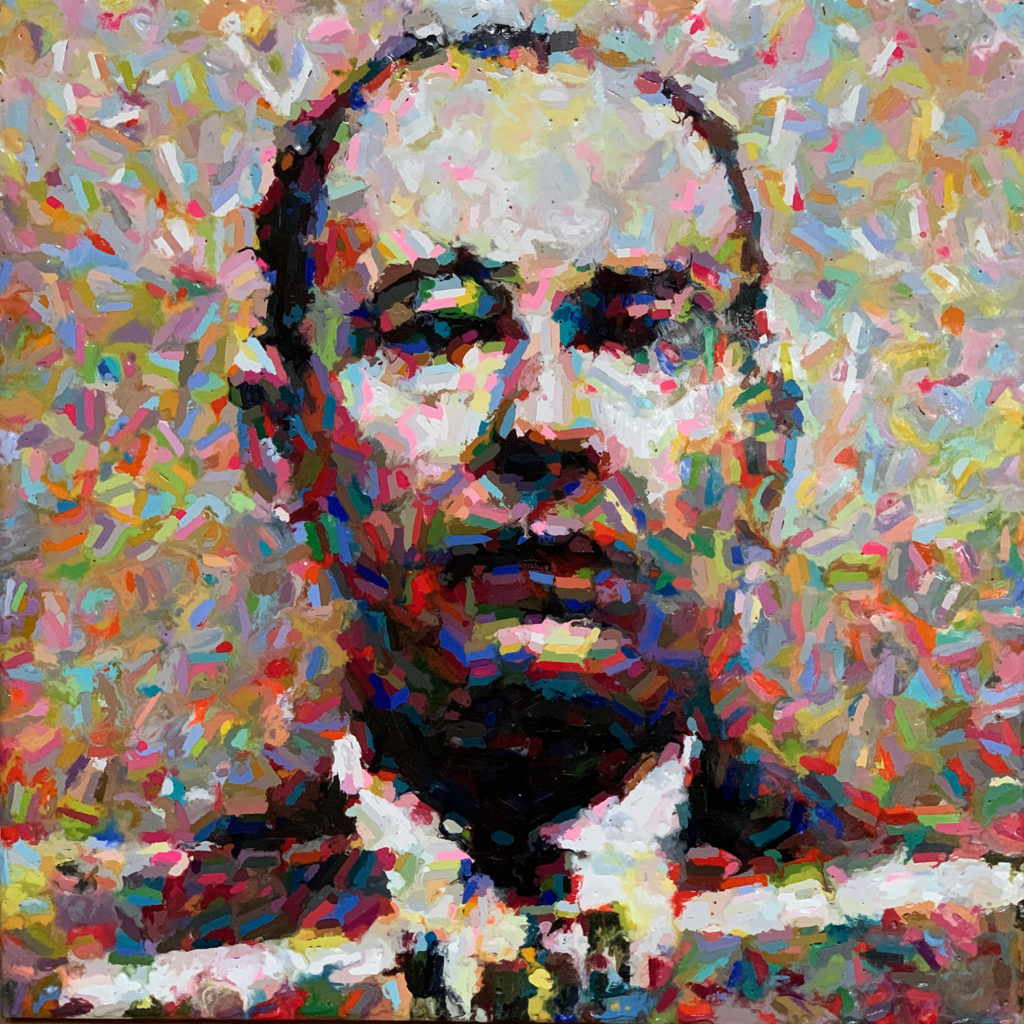
John von Neumann (1903-1957) was born in Budapest, Hungary to wealthy, educated parents who surrounded him with books and governesses. Already at the age of six, he was able to divide long strings of numbers in his head like a human calculator. In addition to being a young polyglot, he was a budding polymath, interested in mastering a wide range of subjects. He earned a PhD in math at the University of Budapest while graduating in Zürich with a degree in chemical engineering to placate his father, who wanted him to have a practical vocation to fall back on.
For his postdoc, von Neumann traveled to Göttingen, Germany, world-famous for the high calibre of its math program. There he worked with David Hilbert and developed a solution for Hilbert’s fifth problem. Early on in his career, he published a book laying out the mathematical basis of quantum mechanics. When Princeton offered him a professorship in 1933, the timing was right as Hitler was now in a position of power, so his mother, his brothers, and he moved to the U.S.
Along with Einstein, he became one of the founding members of the prestigious Institute for Advanced Study.
Von Neumann, the son of a banker, was also interested in the social sciences and economics. He memorized math formulae for fun and liked to apply them to discover patterns in other fields of study. In a book he co-authored about game theory, Theory of Games and Economic Behavior, he describes mathematical models of logical decision-making strategy in humans.
As the United States entered WWII, John found himself in constant demand by the government. At Los Alamos as a consultant for the Manhattan Project, he advised scientists on constructing the atomic bomb so that it would detonate at just the right time and with maximum efficiency. His proximity to nuclear test sites put him at risk of exposure to radioactivity, which is thought to have played a role in his death. His friends attest to the fact that he loved his work for the government and was extremely devoted to his adopted country.
The calculations necessary for the assembly of the bomb led von Neumann to imagine a future with computers. He encouraged an international effort to develop a general-purpose computer that was binary based. The von Neumann architecture of a computer, as he described it in a paper in 1946, is roughly similar to our computers today. This paper described the basic parts of a computer as a memory store, input, output, a CPU, and ALU. Although Alan Turing is known as the father of the modern computer, von Neumann can certainly be considered its most effective PR agent.
https://en.wikipedia.org/wiki/Von_Neumann_architecture#/media/File:Von_Neumann_Architecture.svg
The stereotypical math geek is introverted and shy, but von Neumann was the Johnny Depp of the math world. He threw legendary parties, adored flirting, gossip, and earthy humor, and enjoyed music at high decibels, which his neighbors complained about. A gourmand who struggled with his weight, he could count everything but calories, his wife quipped. The physicist Edward Teller recalled that the worst part of dying of cancer for von Neumann was that his brain was impaired by the disease, and the process of thinking had always been John’s favorite pastime. A prolific writer throughout his life, he worked on his last book, The Computer and the Brain, until he died at age 53.



